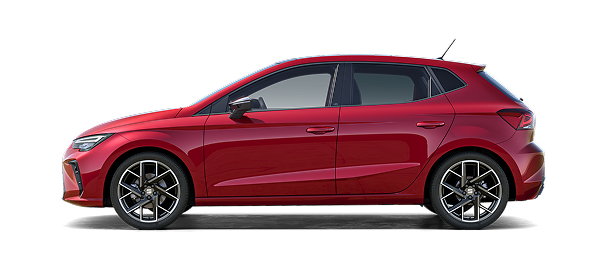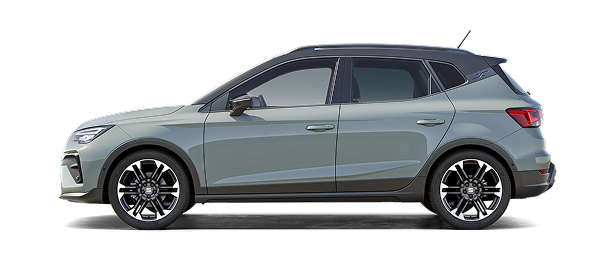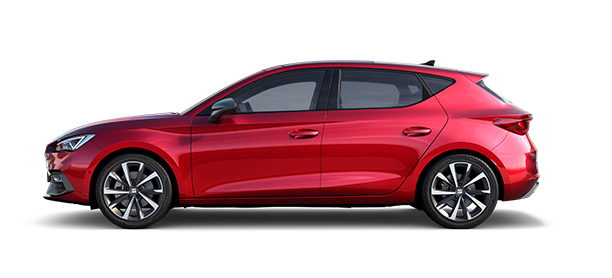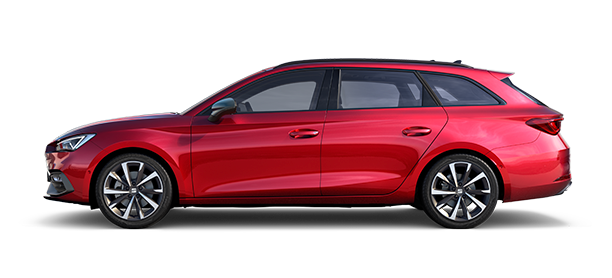In just a decade, screens have become the centre of many of our activities, and cars are no stranger to this trend. The new Leon, the most technologically advanced model in SEAT’s history, incorporates a central screen that, according to Dani Molina, head of UI (User Interface) design at SEAT, is its “brain and heart.”
From nothing to everything.
From the 1400 to today: screens were once non-existent now they’re a main feature.
What used to be an extra on the 1400 model, that small slot on the dashboard for an optional radio now conditions a large part of the car’s interior design. It is on the fourth generation SEAT Leon’s central screen that all infotainment functionalities are grouped together. For Dani Molina, the change has been clear: “the main evolution in the dashboard has been that first it only had a radio, then new functionalities were added in different buttons and switches and now all these functionalities and more have been concentrated in the central screen.” One place for controlling everything.
A tablet on wheels.
After four years of design work, a task shared by the interior and digital departments, the new Leon could be described as a tablet on wheels. The dashboard no longer incorporates any buttons beyond the warning and on/off buttons, as all functions are controlled from the touchscreen. A clear example of this revolution is that from the third generation Leon to this one, up to 20 buttons have been eliminated.
A prominent location.
Unlike previous trends, the screen display in the new Leon is in an elevated position, parallel to the steering wheel. Thus, “the user has everything they need at their fingertips and on sight reach”, explains the UI designer. Developed on the concept of horizontality, you can configure the system in a maximum of two clicks to deliver the key driving functionalities, “one to see the status and one to turn them on or off”, he adds.
User-centric.
It is precisely this two-click system that is key to the discipline of user interface design, which has one basic goal: optimising the interaction between the user and the machine. “It’s easy: if you can do something in two clicks, why do it in three?” he explains. That’s why behind the screen of the new Leon there are thousands of user tests to determine the best way to orient the display for efficient interaction. “If we design attractive icons but the user doesn’t understand them, then we haven’t done our job properly”, he adds.
Personalisation as a priority.
The new SEAT Leon has a central screen that’s a control hub for the car’s functions.
The new Leon’s 10-inch screen includes up to 2,000 icons specifically designed for each function with its own SEAT identity and aesthetics. The home display features three fully customisable main widgets, an applications bar and direct access to the integrated climate control, as well as 12 other functionalities, including multimedia services, navigation and mobile phone connection. According to Dani Molina, this digital system is key to the user’s relationship with the car: “Depending on the user’s needs, one can decide if they want to have navigation and telephone on their main screen, because that’s what they use most, and another who doesn’t need navigation may prefer to see the driving mode configurator and radio first.”
An open door to the future.
At this technological level, the question is what comes next. For Dani Molina, the next step is humanisation. The car’s responses will no longer be pop-ups and will be personalised in a kind of dialogue: “it’s very important that the car makes it clear that it’s listening to the user’s requests, that it’s not talking to itself, and that it answers in a more human, assistive and quicker way.” And beyond the screen, “one day, images could even be projected onto the windscreen as answers”, he concludes.
The 1400 and the Leon in figures.
With its launch in 1953, the SEAT 1400 laid the first stone in the company’s consolidation. The rounded, four-door saloon left the Zona Franca plant to become a sales success: despite having a much lower production volume than today (five cars a day), 98,978 units had been sold by the end of its sales run. In terms of infotainment features, it only incorporated a small adjustable radio with buttons and wheels, a clear precedent of what is now included in the console of the new Leon, along with many other functionalities. On the other hand, with 21 years of history and four generations, the SEAT Leon is currently the brand’s best-selling model, with 2,200,000 units sold in its entire existence. Technological advances in both manufacturing and in the exterior and interior development of the car make it SEAT’s most technological vehicle, with five engine options and a central screen that facilitates efficient driving and also enhances infotainment.













